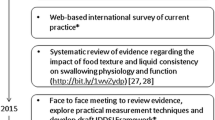Abstract
The last decade has seen an increasing trend in consumer preference of bottled water over tap water. Little is known what type of water children and adolescents prefer for drinking and what their parents think of their community tap water. The study objective was to assess drinking water preferences, perceptions of the qualities of tap water and bottled water, and fluoride knowledge in an urban pediatric population. We conducted an anonymous survey of a convenience sample of caretakers of children and adolescents at an urban clinic regarding their preferences for tap or bottled water, their perceptions of the quality of tap and bottled water and their knowledge of fluoride. Of the 208 participants (79% African American, 9% Latino), 59% drank tap water, 80% bottled water. Only 17% drank tap water exclusively, 38% drank bottled water exclusively, 42% drank both. We found no significant differences in water preferences across age groups, from infancy to adulthood, or among ethnic groups. Ratings for taste, clarity, purity and safety were significantly higher for bottled water than tap water (P < 0.001). Only 24% were aware of fluoride in drinking water. We conclude bottled water was preferred over tap water in an urban minority pediatric population. Perceptions of the qualities of water seemed to drive drinking preferences. Public health strategies are needed to increase public awareness of the impact of bottled water consumption on oral health, household budgets and the environment.

Similar content being viewed by others
References
Rodwan, J. G., Jr. (2010). Confronting challenges: U.S. and international bottled water developments and statistics for 2008. Bottled Water Reporter, April/May, 2010, 9/7/10.
NRDC—National Resources Defense Council. (2010). Bottled water: Pure drink or pure hype? Chapter 2. Exploding sales: Marketing a perception of purity. http://www.nrdc.org/water/drinking/bw/chap2.asp. Accessed 09/07.
Ward, L. A., Cain, O. L., Mullally, R. A., et al. (2009). Health beliefs about bottled water: A qualitative study. BMC Public Health, 9, 196.
Doria Mde, F., Pidgeon, N., & Hunter, P. R. (2009). Perceptions of drinking water quality and risk and its effect on behaviour: A cross-national study. Science of the Total Environment, 407(21), 5455–5464.
Doria, M. F. (2006). Bottled water versus tap water: Understanding consumers’ preferences. J Water Health, 4(2), 271–276.
Centers for Disease Control and Prevention, Division of Oral Health. (2009). Background: Infant formula and the risk for enamel fluorosis. http://www.csc.gov/FLUORIDATION/safety/infant_formula.htm. Accessed 10/02/2009.
Johnson, S. A., & DeBiase, C. (2003). Concentration levels of fluoride in bottled drinking water. Journal of the Dental Hygiene, 77(3), 161–167.
Lalumandier, J. A., & Ayers, L. W. (2000). Fluoride and bacterial content of bottled water vs tap water. Archives of the Family Medicine, 9(3), 246–250.
Lewis, C. W., & Milgrom, P. (2003). Fluoride. Pediatrics in Review, 24(10), 327–336.
Quock, R. L., & Chan, J. T. (2009). Fluoride content of bottled water and its implications for the general dentist. General Dentistry, 57(1), 29–33.
Centers for Disease Control and Prevention. (2010). Untreated dental caries (cavities) in children ages 2–19, United States. http://www.cdc.gov/Features/dsUntreatedCavitiesKids/. Accessed 9/15/10.
U.S. Government Accountability Office. (2010). Report GAO-09-861T. Bottled water: FDA safety and consumer protections are often less stringent than comparable EPA protections for tap water. Statement of John Stephenson, Director, Natural Resources and Environment. http://www.gao.gov/new.items/d09861t.pdf. Accessed 9/2/2010.
U. S. Environmental Protection Agency. (2009). Water on tap: What you need to know. http://www.epa.gov/safewater. Accessed 10/02.
Department of Health and Human Services, Centers for Disease Control and Prevention. (2010). Fact sheet on questions about bottled water and fluoride. http://www.cdc.gov/fluoridation/fact_sheet/bottled_water.htm. Accessed 07/29.
Centers for Disease Control. (2009). Chapter 3: Infant feeding. Infant feeding practices study II: Data: Table 3.97. http://www/cdc/gov/ifps/results/ch3/table3-97.htm. Accessed 06/11/2009.
Sriraman, N. K., Patrick, P. A., Hutton, K., & Edwards, K. S. (2009). Children’s drinking water: Parental preferences and implications for fluoride exposure. Pediatric Dentistry, 31(4), 310–315.
Hobson, W. L., Knochel, M. L., Byington, C. L., Young, P. C., Hoff, C. J., & Buchi, K. F. (2007). Bottled, filtered, and tap water use in Latino and non-Latino children. Archives of Pediatrics and Adolescent Medicine, 161(5), 457–461.
Scherzer, T., Barker, J. C., Pollick, H., & Weintraub, J. A. (2010). Water consumption beliefs and practices in a rural Latino community: Implications for fluoridation. Journal of Public Health Dentistry, 70(4), 337–343.
Pennsylvania WIC Program. (2010). Pennsylvania WIC food list: Basic rules and regulations. http://pawic.com/foodlist-en.pdf. Accessed 09/21/10.
United States Department of Agriculture Food & Nutrition Service. (2001). Supplemental Nutrition Assistance Program (SNAP) (formerly the Food Stamps Program). http://www.fna.usda.gov/snap/retailers/eligible.htm. Accessed 09/21/1.
City of Philadelphia Water Department. (2009). Facts about your water. http://www.phila.gov/water/Fact_Sheets.html. Accessed 01/14.
Kavlock, R., Barr, D., & Boekelheide, K. (Oct 2006). NTP-CERHR expert panel update on the reproductive and developmental toxicity of di(2-ethylhexyl) phthalate. Reproductive Toxicology, 22(3), 291–399, 09/15/10.
Duhigg, C. (2009). Toxic waters—clean water laws are neglected, at a cost in suffering. The New York Times. September 13, 2009; Series article. Available from: http://www.nytimes.com/2009/09/13/13water.html.
Centers for Disease Control. (2009). Recommendations for using fluoride to prevent and control dental caries in the United States. MMWR, 09/30/2009.
Consumer Reports. (2009). Water filters—simple effective options. http://www.consumerreports.org/cro/home-garden/kitchen/water-filters/. Accessed 01-20.
American Academy of Pediatrics. (2010). Bright futures: Guidelines for health supervision of infants, children and adolescents, 3rd edn. http://www.brightfutures.aap.org/3rd_Edition_Guidelines_and_Pocket_Guide.html. Accessed 09/10.
Baker, R. (2002). Infant formula safety. Pediatrics, 110(4), 833–835.
U.S. Food and Drug Administration. (2010). FDA 101: Infant formulas. http://www.fda.gov/ForConsumers/ConsumerUpdates/ucm048694.htm. Accessed 9/2.
Edwards, M. (2009). Evidence that fluoride in the infant formula causes enamel fluorosis weak. Evidence Based Dentistry, 10(3), 73.
American Academy of Pediatrics. (2009). Pediatric Nutrition Handbook, 6th edn. Elk Grove Village, IL: American Academy of Pediatrics.
Pendrys, D. G. (1995). Risk of fluorosis in a fluoridated population. Implications for the dentist and hygienist. The Journal of the American Dental Association, 126(12), 1617–1624.
Author information
Authors and Affiliations
Corresponding author
Rights and permissions
About this article
Cite this article
Huerta-Saenz, L., Irigoyen, M., Benavides, J. et al. Tap or Bottled Water: Drinking Preferences Among Urban Minority Children and Adolescents. J Community Health 37, 54–58 (2012). https://doi.org/10.1007/s10900-011-9415-1
Published:
Issue Date:
DOI: https://doi.org/10.1007/s10900-011-9415-1




